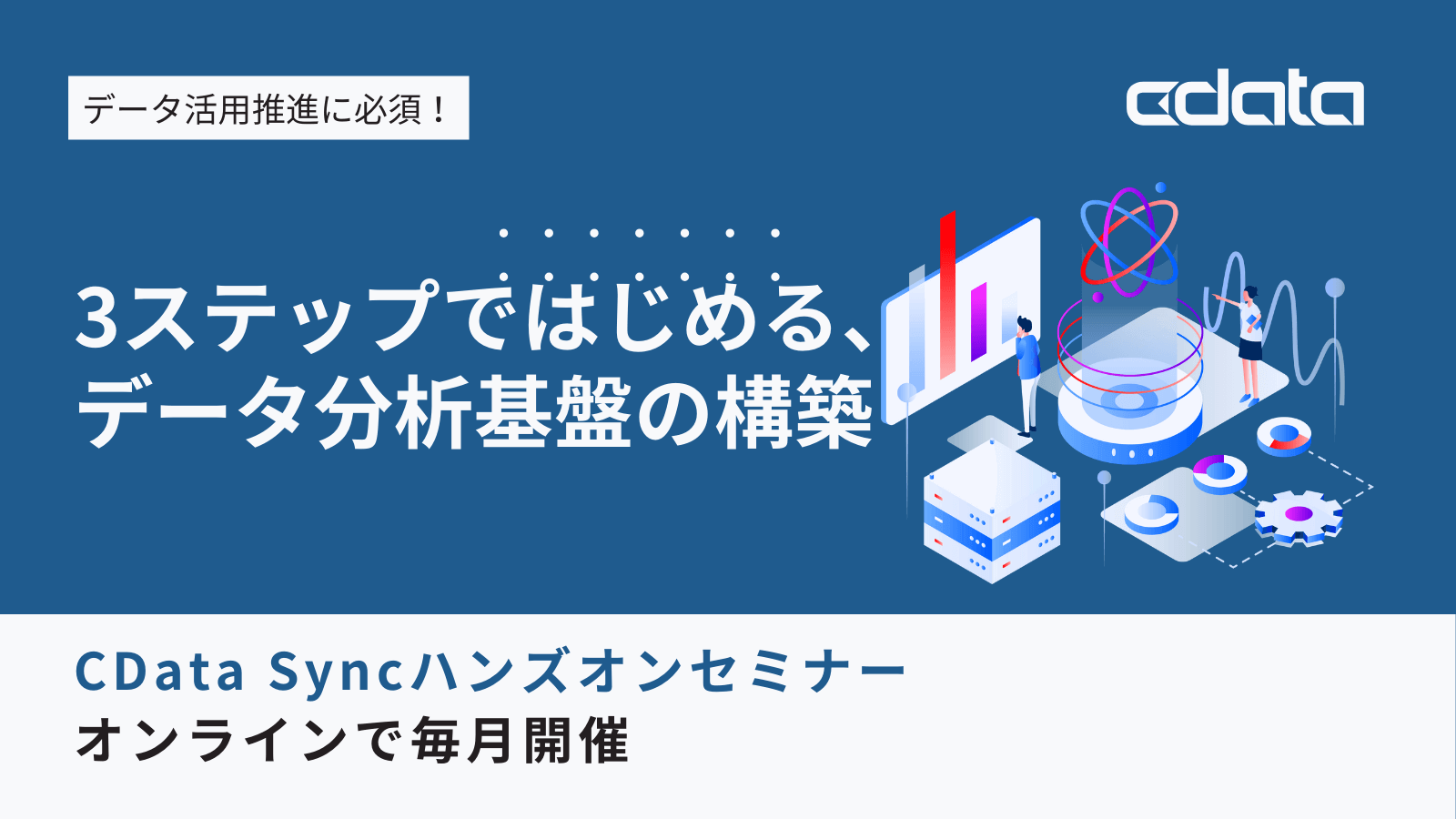ノーコードでクラウド上のデータとの連携を実現。
詳細はこちら →CData Software Japan - ナレッジベース
Latest Articles
- MySQL のデータをノーコードでREST API として公開する方法:CData API Server
- CData Sync AMI をAmazon Web Services(AWS)で起動
- Connect Cloud Guide: Derived Views, Saved Queries, and Custom Reports
- Connect Cloud Guide: SSO (Single Sign-On) and User-Defined Credentials
- Connect Cloud クイックスタート
- Shopify APIのバージョンアップに伴う弊社製品の対応について
Latest KB Entries
- DBAmp: Serial Number Expiration Date Shows 1999 or Expired
- CData Drivers のライセンスについて
- Spring4Shell に関する概要
- Update Required: HubSpot Connectivity
- CData Sync で差分更新を設定
- Apache Log4j2 Overview
ODBC Drivers
- [ article ] Oracle Eloqua データをSQL Server に連携して利用する4つの方法を比較
- [ article ] Informatica PowerCenter でMicrosoft Project ...
- [ article ] Remote Oracle Database としてSage Intacct データにアクセス
- [ article ] Autify データにSQL Server のリンクサーバーとして接続する方法
JDBC Drivers
- [ article ] eBay Analytics JDBC ドライバーを使用したOBIEE でのeBay ...
- [ article ] Azure Data Catalog データを帳票ツールbiz-Stream で連携利用する方法
- [ article ] RPA ツールBizRobo! でJira に連携したフローを作成する
- [ article ] SnapLogic でTSheets を外部サービスに連携
SSIS Components
- [ article ] SSIS を使ってExcel Online データをSQL Server にインポート
- [ article ] SSIS を使ってFreshdesk データをSQL Server にインポート
- [ article ] ShipStation をSSIS 経由でSQL サーバーにバックアップする
- [ article ] Sage 200 データからSQL Server ...
ADO.NET Providers
- [ article ] Visual Studio でチャートコントロールと PCA Sales をデータバインド
- [ article ] Infragistics WPF XamDataGrid と YouTube Analytics ...
- [ article ] SSIS を使ってSlack データをSQL Server にインポート
- [ article ] Google Ad Manager をSSIS 経由でSQL サーバーにバックアップする
Excel Add-Ins
- [ article ] Excel データをSQL Server に同期(キャッシュ)する方法
- [ article ] Microsoft Power Query からAvro データに連携してExcel から利用
- [ article ] SharePoint Excel Services のデータをTableau Desktop ...
- [ article ] StiLL からCData Software ODBC Driver を使ってAzure ...
API Server
- [ article ] Apache Nifi からOData データ連携を行う方法
- [ article ] ローコード開発・運用プラットフォームMendix でOData に連携したアプリを作成する
- [ article ] Excel からMicrosoft Query を使ってOData に接続する方法
- [ article ] Infragistics XamDataGrid を使用してOData のダイナミックグリッドを作成
Data Sync
- [ article ] PostgreSQL へのMicrosoft Project データのETL/ELT ...
- [ article ] MySQL データベースへのSQLite データのETL/ELT ...
- [ article ] Yahoo! JAPAN DATA SOLUTION データからSQL Server ...
- [ article ] Amazon S3 へのCSV データのETL/ELT パイプラインを作ってデータを統合する方法
Windows PowerShell
- [ article ] Kingdee K3 WISE データをPowerShell script でSQL Server ...
- [ article ] PowerShell からPostgreSQL ...
- [ article ] PowerShell からSalesloft データに接続してデータの取得・更新・挿入・削除・CSV ...
- [ article ] GraphQL データをPowerShell でMySQL にレプリケーションする方法
FireDAC Components
- [ article ] Delphi のSAS Data Sets データへのデータバインドコントロール
- [ article ] Delphi のHBase データへのデータバインドコントロール
- [ article ] Delphi のTwilio データへのデータバインドコントロール
- [ article ] Delphi のSAP HANA XS Advanced データへのデータバインドコントロール






